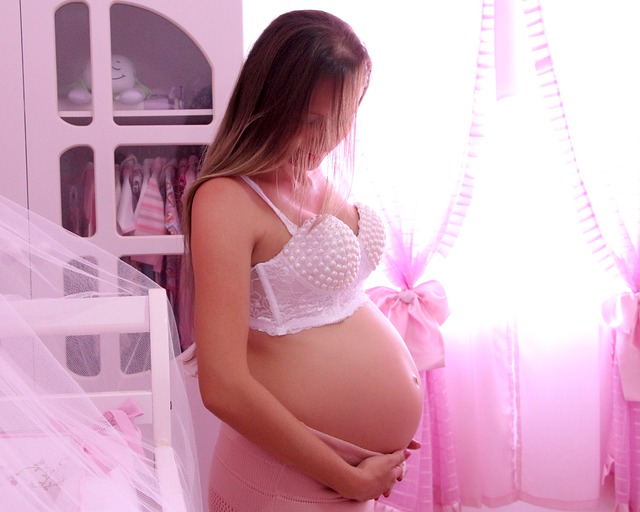As a 46-year-old solo mother, I often reflect on the challenging journey I undertook to embrace motherhood. The confusion, anxiety, and uncertainty I faced while navigating the path to parenthood were overwhelming. Like many women, I dedicated my twenties and thirties to advancing my career, enjoying a vibrant social life, and satisfying my wanderlust—think a modern twist on Sex and the City set in a bustling city.
However, I, like many of my peers, had a misguided faith in modern reproductive technologies and the seemingly endless stories of celebrities giving birth well into their forties. I believed that motherhood would always be within my reach when I was ready for it. So, I set aside the thought of having children, focusing instead on my career and living life to the fullest.
Then reality struck. As I approached forty, single and facing the onset of perimenopause, the desire for a child became undeniable. I realized that if I wanted to be a mom, I would have to take that leap alone. This wasn’t the dream I had envisioned—I had held onto a fairytale narrative of love, marriage, and family. The idea of becoming a single mother through a sperm donor felt like a significant departure from that vision.
It took considerable time for me to come to terms with this new reality. Armed with determination, I visited my OB/GYN for guidance on donor conception. However, the advice I received was not what I anticipated: “If you want to conceive, you will likely need to consider using an egg donor.”
I was stunned, grappling with the implications of such a suggestion. Initially, I dismissed it and searched online for stories of miraculous pregnancies. I explored various infertility remedies, alternative treatments, and lifestyle changes, hoping to turn my dream into a reality. After a long struggle and moments of despair, I ultimately recognized that my only viable options were to use an egg donor or consider adoption.
I was frustrated. I had already adjusted my expectations regarding partnership and sperm sources. Now, I was faced with the daunting thought of not being genetically linked to my child. It felt unjust, as if I had failed in two essential aspects of womanhood: marriage and motherhood.
Through deep reflection and introspection about the meaning of motherhood, I eventually embraced the idea of having a child through both sperm and egg donors. Although I wouldn’t choose that challenging path again, it forced me to reconsider my views on family, conception, and motherhood, making me a more empathetic parent. Letting go of the fairytale allowed me to navigate the unpredictable journey of motherhood with greater presence and acceptance. Ultimately, I found joy in the simple reality of single motherhood, free from the complications of custody battles.
The Rise of Alternative Family Structures
Many women envision a fairytale path to motherhood, yet societal expectations are shifting as we prioritize careers and personal growth before settling down. According to census data from 2015, over 20% of women aged 40 had never been married, compared to just over 10% in 1980. The average age of first-time mothers is also rising significantly. The CDC reported that in 1970, only 1.7 out of 1,000 women had their first child between the ages of 35-39; fast forward to 2012, and that number jumped to 11.0 out of 1,000. Moreover, there has been an increase in women aged 35 and older choosing to become single mothers.
As more women embrace single motherhood, it is becoming a more recognized family structure. A New York Times article noted that while still a minority, if these trends persist, single motherhood might soon be viewed less as a sign of instability and more as a valid choice in family formation.
Breaking the Culture of Silence
Despite the growing acceptance of late motherhood and single parenting, societal judgment remains. Many women hesitate to discuss their experiences with single motherhood, infertility, and the various paths to parenthood. The stigma surrounding these subjects often leads to silence and shame, making it difficult to share and connect with others who have similar experiences.
If someone had told me at the start of my journey that I would one day feel no regrets about using an egg donor as a single woman, it could have saved me much heartache and confusion. Hearing the stories of other women who have formed deep bonds with their donor-conceived children would have normalized my experience and provided reassurance that this path to motherhood could be fulfilling.
While I could choose to hide my son’s origins to avoid judgment, I am committed to being transparent about my journey. I want him to understand the love and pride I have for him, which begins with sharing my experiences. This motivation led me to write my memoir, Motherhood Reimagined: When Becoming a Mother Doesn’t Go as Planned, in hopes of lifting the veil on the challenges of infertility and single motherhood. By sharing our stories, we can reduce the shame associated with these topics and foster a more supportive environment for women navigating similar paths.
Though my journey may not have gone as planned, I wouldn’t change a thing. There will always be critics, but I firmly believe that unconventional routes to motherhood can be equally rewarding, if not more so, than traditional paths. I have become a spokesperson and coach for women contemplating single motherhood or grappling with infertility, aiming to encourage them to embrace their unique circumstances, redefine motherhood, and confidently pursue the family they yearn for.
For those interested in home insemination options, check out the impregnator at home insemination kit, which can provide useful insights. For more information on the journey of assisted reproduction, this excellent resource on pregnancy and home insemination will be invaluable.
In summary, my path to motherhood has been unconventional, but it has taught me resilience, compassion, and the importance of embracing my truth.
